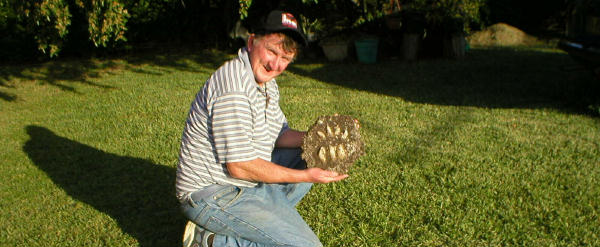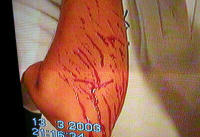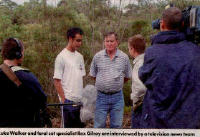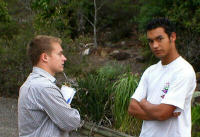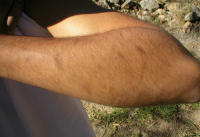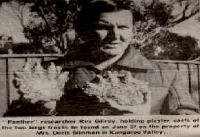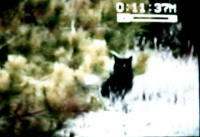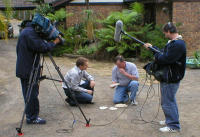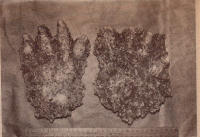Do Panthers Roam the Australian Bush?
They have been reported seen in every Australian state: often huge, black-furred
catlike animals that prowl the remoter regions of our vast mountain ranges, from
where they emerge to terrorise scattered farming communities, killing livestock and leaving
behind their large paw-prints as calling cards.
They are the mysterious "Australian Panthers", creatures around which much folklore
has been spun and, like the Thylacine and Yowie, will continue to exercise a hold on the
imagination of Australians for generations to come. The "Australian Panther" had been known to the Australian Aborigines for untold
thousands of years before the coming of the Europeans. Thus, like all our other mystery
monsters', it has inhabited this continent since ice-age times.
A popular myth has grown up about these animals; namely, that they are escaped
circus or zoo panthers that have gone wild.
In all my 30 years of investigations into the Australian Panther mystery, I have not
uncovered one authenticated case of a panther having escaped from an Australian circus or
zoo and gone wild. Nor is there much substantiation to the other exaggerated story that
cougars were liberated in various parts of Australia by American servicemen during World
War 2.
The "Australian Panther, like the still-living Thylacine, giant monitor lizard and
Yowie, still evades capture; and until one is available for scientific study, its actual identity
will continue to remain unestablished.
One thing, however, is certain. It cannot be a member of the feline family as no such
animal is known from the Australian fossil record.
In fact, as will be demonstrated from
sightings descriptions to follow, our 'panther' is actually a marsupial-a giant marsupial cat
species that has survived from ice-age times, perhaps, as with the "Blue Mountains Lion" (to
be dealt with in our next chapter) related to the 'extinct' Marsupial Lion, Thylacoleo carnifex.
The amount of case histories of Australian Panther sightings is voluminous and far
too extensive to be completely covered in this book, although the many reports that follow
will give the reader more than enough food for thought on the subject. While known in every
state, it is certain that their main distribution is concentrated throughout the vast eastern
Australian mountain ranges.Enter Site For Extensive Links Here
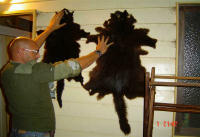 |
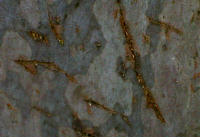 |
|
 |
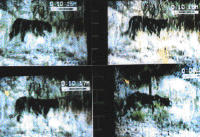 |
It seems that the vast, often inaccessible forests of Tasmania's interior are the domain of not only the Thylacine but also the Australian Panther. Dozens of sightings of these mystery 'panthers' and chance discoveries of their paw-prints in remote areas make it clear that these creatures, far from being a few escaped alien Asian cats from some travelling circus or city zoo, are an as-yet-unknown native Australian animal species which requires a full investigation - but continues to be ignored by conventional scientists. Impossible? Preposterous? I do not believe so. The mainland sightings are no different, and there are far too many to be ignored.
|
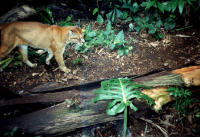 |
|
|
|
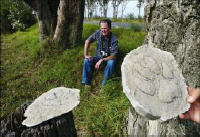 |
Do Panthers Roam the Australian Bush?
Prior to the flooding of the Bass Strait land-bridge toward the close of the last great
ice age about 12,000 years ago, no natural barrier existed to prevent these animals from
entering Tasmania, and it is evident that today, isolated from their mainland counterparts,
some of these marsupial carnivores continue to survive there.
This is where we begin our
study of the Australian Panther.
Tom Forester, a camper, was with two mates exploring the Snowy Range west of
Hobart one weekend in January 1972. On this particular Sunday morning they all spotted a
large, black-furred catlike animal observing them from the edge of dense scrub nearby their
camp. They had no sooner got to their feet than the creature turned to vanish quickly into the trees. The men later found large paw-prints embedded in soil near their camp, suggesting
the animal had been there the previous night.
Later that afternoon Tom went to get water from a creek. As he crouched on the
creek's edge beneath a tall boulder, he saw a dark shadow reflected in the water. Before he
could turn to look up, he was thrown aside as the dark shape leapt upon him with a screech,
then bounded across the creek into bushland. A shocked, badly scratched Tom staggered
back to camp. Soon afterward his startled friends went in search of the mystery animal but it
had left the area.
In April 1989 a group of a dozen people saw a black-furred panther-like animal,
about two metres in length from head to tail and standing up to 0.6 of a metre on all fours, as
it moved along the shore of Lake Gordon in the Mt Wright area, north of the Snowy Range.
An animal of this size and description was claimed seen bounding across the
Marlborough Highway one afternoon in February 1990.
Ten years earlier, one eyewitness claimed to have seen no less than three of these
large 'panthers' roaming together near Split Rock, west of Great Lake.
This report resulted in one farmer from the Mount Arthur district east of Launceston
relating how, one day in 1960, he had watched powerlessly as a "black catlike monster", a
good seven feet (2.3 metres) from head to tail, bounded out of scrub onto his property to
attack and carry off a large calf.
Craig Black, a young fossicker, was digging in a creek in Ben Lomond National Park
one day in 1961 when he realised he was being watched by a large black 'panther' further up
the creek on the opposite bank. The animal emerged, then dashed across the shallow creek.
It was apparently a female. "I am positive I saw that it was carrying a pouched cub," he said later to a ranger.
A Mr Gregory Hunter, his wife and another couple were driving near Smithton in the
north-west of the state one March day in 1968 when they drove past a five-foot-long (1.6 m)
black-furred "giant cat standing on the scrubby roadside. “We stopped. I backed up the car hoping we could get a better look, but the strange
beast had vanished,” he said.
Enter Site For Extensive Links Here
|
Do Panthers Roam the Australian Bush?
The Cradle Mountain-Lake St Clair region has long been the scene of ‘panther’
sightings stretching back to last century. In 1970, the region was alive with sightings reports
of animals that left paw-prints up to five inches (12.6 cm) in width.
At Mount Olympus, for example, campers discovered massive tracks embedded in
mud near their camp, and, at the southern end of the lake, bushwalkers were horrified to
discover a dismembered cow, torn apart only a day or two before by a creature whose large
paw-prints were still visible in the soil about the site.
This writer frequently receives such tales from widely scattered and remote regions of
Australia, and many of these reports concern the often loud, weird, screeching sounds made
by these animals.
In 1928, in the Great Western Tiers southwest of Launceston, a group of
roadworkers were terrified in their camp one night by the incessant howling and screaming
sounds of two or three unseen creatures. The men were convinced the area was inhabited by “Jungle cats” and refused to stay there another night!
In 1940 outside Strathgordon, west of Lake Gordon in the wild bush country of
southwestern Tasmania, a farmer and his wife spotted a "seven-foot-length giant panther-like
animal as it dashed across their back paddock and leapt effortlessly over a six-foot-tall fence
before disappearing into trees.
Let us now turn to Victoria and the other mainland states for further proof that a
giant marsupial catlike species still survives in the Australian bush.
We turn now to Victoria
On the morning of 29th January 1976, at Lake Merrimu near Bacchus Marsh west of Melbourne, a farmer and his family claimed to have seen a “six foot [1.83m] length, two foot [61cm] tall, black-furred cat-like monster”, as it moved across their property, dragging a dead calf in its powerful jaws.
They stood dumbfounded for a moment before the farmer raced into the house to grab a rifle. The animal and its ‘kill’ had by now vanished into scrub, but the man and his teenage son gave chase. The strange beast, however, eluded them in the dense bushland.
|
Do Panthers Roam the Australian Bush?
East of Melbourne, near Hastings in 1977, a farmer, Mr Todd Anderson, lost three pigs in the space of a week, to a mysterious animal that visited his property at night. Each time it carried off a pig, the creature left behind enormous claw and pad marks in the farmyard soil.
In fact, the “Hastings Monster” has been known for generations to the locals. East of Hastings, across country in the Warragul-Moe districts, this ‘monster’ continues to make its presence known.
In 1990, two motorcyclists claim to have been confronted by a “seven foot length [2.13m] head-to-tail, black-furred, panther-like creature”, on a bush tack half way between Warragul and Drouin.
In 1999, there were several sightings of a sleek, black-furred, panther-like animal, or animals, in the Moe district. Late one night in March that year, a motorist, John Clark, had to apply the brakes when a large ‘panther’ appeared ahead of his vehicle in the headlights, standing on a lonely bush road. It was dazzled by the headlights glare momentarily, before dashing off the road into the darkness.
During 2000 there were reports of fresh tracks of the “Moe Monster” found on properties about the district.
Back in September 1978 a long ‘trackway’ of 15.3cm length paw prints were found on a muddy bush track close to the town. Eleven years later these animals were still being seen thereabouts, for in November 1989, a 1.6m long ‘panther’ was claimed seen crossing a paddock late one afternoon.
In June 1991, I received a report that several pigs and two calves had been killed by a mysterious animal in the vicinity of Yarragon. A farmer, a Mr Davis, discovered his missing animals in a heap in bushland, about two kilometres from his home. All had been mutilated and eaten and all had fang marks behind their heads - a characteristic of ‘panther’ kills.
My research into the elusive "Australian Panther" often digs up old but interesting
stories, such as a case from 1940 outside Melbourne in the Whittlesea district.
Locals had found a number of large paw-prints, and discovered that numerous
poultry had been taken by an enormous catlike beast which persisted in terrorising the
community and raiding farms in the area for some weeks
|
Government Reports - N.S.W | A.C.T | S.A | VIC | W.A | N.T | QLD | TAS
Reports on Panther Activity by Government Departments |
Eyewitness Accounts - N.S.W | A.C.T | S.A | VIC | W.A | N.T | QLD | TAS
Reports of Panther Sightings by Eyewitnesses |
Newspaper Accounts - N.S.W | A.C.T | S.A | VIC | W.A | N.T | QLD | TAS
Reports on Panther Activity in Newspapers |
Online Accounts - N.S.W | A.C.T | S.A | VIC | W.A | N.T | QLD | TAS
Reports on Panther Activity by Online Sources
|
| 'Panther' Research New South Wales - To Be Updated 2010 |
'Panther' Research Victoria - To Be Updated 2010
|
'Panther' Research A.C.T. - To Be Updated 2010
|
'Panther' Research N.T. - To Be Updated 2010
|
'Panther' Research Qld - To Be Updated 2010
|
'Panther' Research Western Australia - To Be Updated 2010
|
'Panther' Research South Australia - To Be Updated 2010
|
'Panther' Research Tasmania - To Be Updated 2010
|
|
|
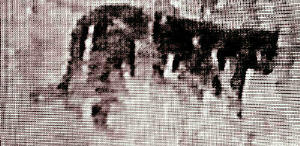 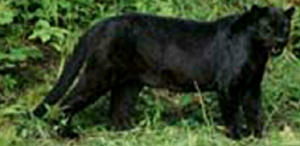
© Left Video Still: - Footage 2001 - Lithgow Cat | | Right photograph: Leopard (Melanistic - Black Panther)
They have been reported seen in every Australian state: often huge, black-furred catlike animals that prowl the remoter regions of our vast mountain ranges, from where they emerge to terrorise scattered farming communities, killing livestock and leaving behind their large paw-prints as calling cards. The "Australian panther" had been known to the Australian Aborigines for untold thousands of years before the coming of the Europeans. Thus, like all our other mystery monsters', it has inhabited this continent since ice-age times.
Enter Site For Extensive Links Here
|
|
|
|
|
|
